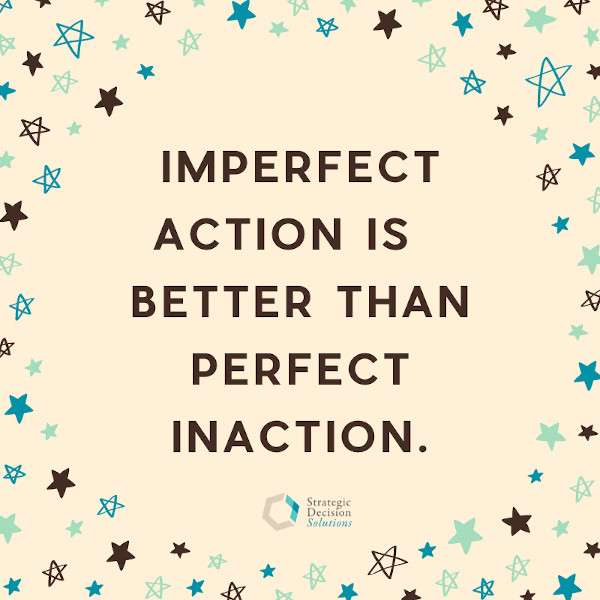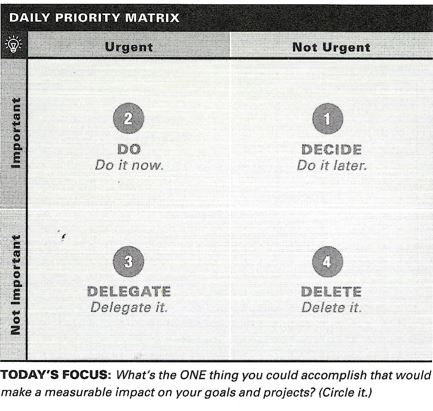Thoughtfulness is a wonderful trait and one my family and I strive for each day. In the professional setting, it’s also considered an essential leadership quality that ultimately yields better results for an organization.
Individuals who process information more deeply than others can be called “sensitive strivers,” according to executive coach and author Melody Wilding in this Harvard Business Review article. Being able to investigate different angles and nuances to a problem or situation can be a great quality for any executive or risk professional to possess.
However, it comes with one big drawback…
At a certain point, contemplation turns into overthinking, leading to the dreaded analysis paralysis.
It’s something we’ve all fallen prey to at one time or another both personally and professionally. Think about it – have you ever struggled to decide on where to go eat when visiting a new city or where you would like to go for vacation?
In the business context, analysis paralysis can occur in an array of decisions ranging from high-level strategic plans to determining the best risk response or risk assessment process to adopt.
An explanation for why this occurs can be found in the book Decision Quality: Value Creation from Better Business Decisions where it says:
All decisions are about the future, which is uncertain. Even with a high-quality decision, the outcome is not guaranteed. Since the only way to achieve value is through action, this discomfort must be overcome.
If you’ve experienced analysis paralysis, you know how frustrating it can be. Below are five steps that anyone ranging from an executive to a mid-level manager or risk analyst can take to break this cycle and make better decisions at the speed at which they are often needed.
The aforementioned Harvard Business Review article goes into details on each of these steps, so I am not going to repeat it. I highly recommend checking out the article and then come back and read the additional insights I provide!
1. Put aside perfectionism
Like thoughtfulness, the desire to get it right is an admirable quality, but if you try to weigh every possible outcome, this same quality can also lead to analysis paralysis. The HBR article provides some questions you can be asking to transform a decision into more manageable chunks.
Taking this thought a little further, remember that you know what doesn’t work at your organization and you know the people you’re working with, so come up with two or three viable options based on your knowledge (and research and analysis), make a decision, and take action. Your way of decision-making doesn’t have to consider every single way of doing things or every possible outcome.
Once a decision around a strategy or process is made, you don’t have to come out with guns blazing. As we explain in a previous article on how ERM is similar to developing a new product, you can run the decision by a small “test” group, make changes based on feedback, and keep trying until you achieve the desired result.

2. Right-size the problem
Some decisions require more deliberation than others. However, there are some of us who place every decision on the same level.
Besides the 10/10/10 test Melody suggests in the HBR article, another way to put the problem into the right perspective is to stop worrying about what CEO and CFO will think. It’s easy to get star struck and intimidated by people’s titles. Instead, put these fears aside and take the long-view by focusing on achieving positive outcomes.
No one likes to make mistakes, but executives also understand that not everything will work out on the first try (as much as they wish it wasn’t the case). As the Swiss Proverb says:
You learn through mistakes – no one was born a master.
3. Leverage the underestimated power of intuition
Intuition is a natural process that uses knowledge gained from our experiences to determine the best course of action. We use intuition all the time without realizing it. When traveling on a two-lane highway, the decision of whether to pass that slow poke in front of you must be quick…there isn’t time to analyze data or gather other information.
When it comes to business decisions though, we often cast intuition aside, but when coupled with analytical thinking, Melody explains it can help you
“…make better, faster, and more accurate decisions and gives you more confidence in your choices than relying on intellect alone.”
My only caution is that we have to set aside our personal preferences about taking risk when it comes to using that intuition. What feels like the best course of action may not be in alignment with the risk appetite of the organization.
As a personal example, I spent 5 years as an insurance regulator in Florida. Now this may not seem like much, but this broad and in-depth experience from nearly two decades ago plays an invaluable role in the perspective I bring to my clients today.
When it comes to decisions at your company, what is your prior experience telling you?
4. Limit the drain of decision fatigue
According to some estimates, the average person makes over 35,000 decisions per day. You read that right – 35,000!!!
This can be draining, especially if you and executives are having to make impactful decisions. It can get so overwhelming that by the end of the day, it can be a struggle to make the simple decision of what to eat for dinner.
To conserve your brain’s energy, Melody suggests creating routines and rituals around some everyday diet and wardrobe decisions (I do this as much as possible at home) and to seek out ways to eliminate the need to make a decision altogether.
Another tool that can be helpful is what’s known as the Daily Priority or “Eisenhower” Matrix. Originally developed by former President Dwight Eisenhower (…and refined by high-performance executive-coach Todd Herman), this matrix helps you visualize what you must decide and do today, what you can put off until later, what you can delegate, and what’s inconsequential.

When used in a disciplined, systematic way, the Daily Priority Matrix can be tremendously helpful in reducing this dreaded fatigue that can lead to analysis paralysis. In fact, I would recommend taking 5-10 minutes at the end your day to use this matrix, so that tomorrow is planned out at a high-level. This planning routine minimizes the uncertainty of what your day will look like.
5. Construct creative constraints
A concept called Parkinson’s Law states that a task, no matter how simple, will take as long as we allow it. For example, if you have a month to refine your risk assessment processes, you’ll take that long when in reality it could be done much quicker.
Melody explains how she has observed this principle with sensitive strivers – if we have a week to mull something over, we’ll take that amount of time even if it’s something that doesn’t require that level of thought, which of course wastes huge amounts of time and energy.
Setting firm deadlines can help rein this in. You can put this deadline on your calendar, set a reminder on your phone, or even tell the person or persons when they can expect a decision or output from you.
Taking this concept a step further is to have an accountability partner. We have all heard of this term when it comes to diet and exercise, but work? Yes, work. Whether it is a peer or a team member, communicating deadlines to others and encouraging them to ask you about it is another way to ensure you meet those dates.
Another tactic not mentioned in Melody’s article is the art of delegation. Ask yourself – is this something that personally needs my attention? If not, consider handing it off to a trusted employee or someone else in the organization. As a consultant, I’ve had to learn how to delegate various tasks to trusted team members and assistants. If I tried doing everything, I wouldn’t have the time or energy to devote to serving my clients.
Don’t feel like you’re alone…
Analysis paralysis is a very real phenomenon that we all encounter at one point or another, but it’s more pronounced in certain personalities. Taking steps to alleviate this issue can yield tremendous benefits for your calendar and mental energy, freeing you and company leaders to perform at your very best.
Do you struggle with analysis paralysis? What methods do you use to combat it?
Any thoughts, experiences, or tactics you can share will be tremendously helpful, so please feel free to leave a comment below or join the conversation on LinkedIn.
If you and your company seem to be mired in analysis paralysis and find that success is increasingly in peril, please don’t hesitate to reach out to discuss potential options for alleviating this burdensome problem.
Featured image courtesy of Steve Johnson via Unsplash.com








